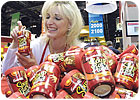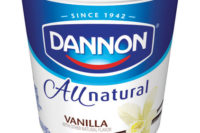
Understanding the importance and value of packaging for new products continues to be a challenge for many organizations. They continue to see packaging as a cost center (the current package is the benchmark and why would we want to pay more than we do now?) and a liability (because the package must run on the current equipment). As a result, many new products go to market with little thought to packaging. Based on recent retail store audits and interviews, this is especially true for the dairy case. Store managers across the country have told us they are not seeing new innovation in dairy packaging. But there is good news. More evidence is building to support the importance of packaging. I am going to share some of these principles that hopefully can help organizations begin to take advantage of packaging as a part of the integrated solution.
As an enabler, packaging is helping to drive new, top-line growth in a variety of ways, and collaboration across the value chain is helping to deliver growth across industries. The top trends taking advantage of packaging include:
Shelf Impact- Package shape and color are helping CPGs break through the retail clutter and bring the shopper to their products because of the package. P&G and a few others are leading the way with a real focus on the shopper and the retail environment.

Convenience- Packaging is the enabler and driver to deliver consumer/customer convenience. Easy-open, re-closable packages and enhanced portability of products such as self-heating coffee and one-handed cereal with milk (Kellogg's Drink'n'Crunch) are examples. As well, Campbell's Soup Bowls and Campbell's Soup-at-Hand are driving new growth in the soup category. And they are driving higher margins, too.
Channels and Private Label (PL) - New and improved graphics combined with improved convenience features are driving PL growth across retail. In fact, some retailers are offering two tiers of PL. Examples include, Target (Target brand, Archer Farms), and Meijer (Meijer brand, Meijer Gold). Sam's Club recently introduced PLA (a corn-based polymer that is from a renewable resource) in four SKUs that account for approximately 114 million containers. We will continue to see that new packaging will help drive additional growth across retail channels.
Technology - New browning and cook-in-package microwave containers, self-heating/chilling containers, smart closures, improved label insulation (DuPont Cool-2-Go), and enhanced shelf-life solutions (modified atmosphere salads, aseptic particulate soups and beverages) are all using packaging as a key enabler to provide new growth.
But, all is not rosy. There are significant issues out there and packaging is part of the problem and part of the solution.Consumer Reports(March 2006) created the "Oyster Awards" for America's hardest-to-open packaging. While dairy did not receive any awards, this is yet another example of the importance and visibility of packaging. Companies need to look very hard at new packaging in the new product development process. With a growing importance on packaging, the package must also deliver on all aspects to the consumer: easy to find, easy to open/close, easy to use, easy to store and more.
The message is clearer than ever before: Packaging is moving up the food chain and getting a seat at the table. As you look to improve current products and develop new ones, be sure to include packaging early in the process and you will improve your chances for success and deliver better and more ownable, integrated solutions.
Packaging is going to be a strong product enabler in the years ahead. n
PTIS and Leading Futurists will be conducting a new and exciting program in 2007 to help companies deliver better results through packaging: The Future of Packaging: The Tipping Point 2007-2016. For more information contactmike@pti-solutions.com.
